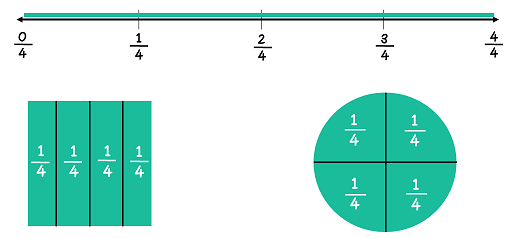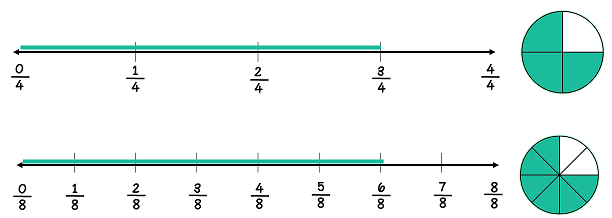Identify and generate equivalent fractions, including fractions greater than one. Describe how the numerator and denominator are affected when the equivalent fraction is created.
Plot, order and compare fractions, including mixed numbers and fractions greater than one, with different numerators and different denominators.
Decompose a fraction, including mixed numbers and fractions greater than one, into a sum of fractions with the same denominator in multiple ways. Demonstrate each decomposition with objects, drawings and equations.
Partitioning is the concept of "equal sharing," or splitting a shape or group of objects into equally-sized groups.
These shapes do not represent halves, thirds, or fourths, because they are not partitioned equally. Students can think about these as being "unfair" divisions of an object.
THese objects are partitioned equally. It's important for students to understand that each section represents an equal fraction of the whole, as labeled above.

Fractions can be represented on a number line through shading, as shown. 4/4 (four-fourths) is the fraction represented on this number line.

Fractions can also be represented on a number line by plotting a single dot. 6/8 is plotted on this number line.
Students should be able to recognize fractions that are represented in different ways, like this fraction (3/4) represented on a number line and a circle diagram.

Representing fractions on number line is very helpful for understanding the concept of fraction equivalence.

These fractions are represented with single plotted dots.

The identity property of multiplication states that multiplying or dividing any number by 1 does not change the value of that number. In fractions, we can represent the number 1 in many different ways. In the example above, 2/2 (two-halves) is equivalent to 1. Multiplying or dividing by 2/2 does not change the value of the fraction.
Fractions greater than one can be represented on a number line, as shown.
Fractions greater than one can also be represented in the form of a mixed number.